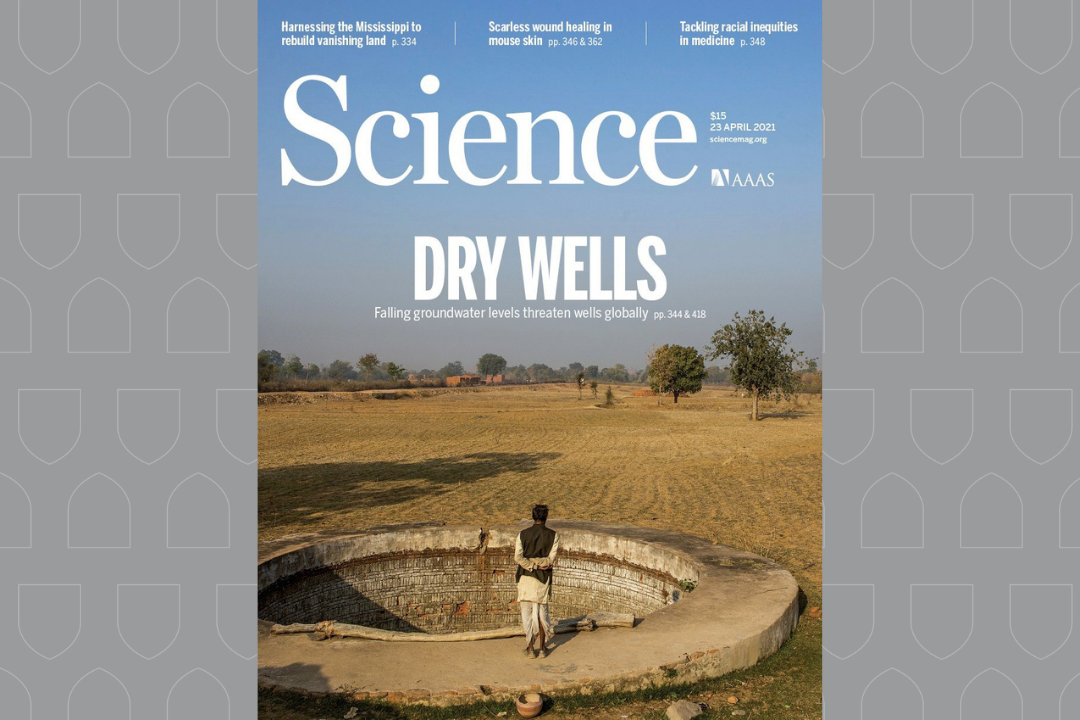
USask experts get big stage to highlight groundwater threats
Groundwater is usually out of sight, out of mind, but it just made the cover of Science, one of the world’s top academic journals.
By Donella HoffmanTwo USask groundwater experts – Jay Famiglietti and Grant Ferguson – were invited to write an opinion piece for Science that provides further context for the cover article, which concluded that millions of wells around the world are at risk of running dry because of disappearing groundwater.
“Groundwater’s unobtrusive nature belies its critical importance to global water and food security while simultaneously subjecting it to massive overexploitation,” write Famiglietti and Ferguson.
“Groundwater is the primary water source for billions of people and for nearly half of irrigated agriculture, yet its inconspicuous presence has allowed groundwater to elude effective governance and management in countless regions around the world.”
(USask readers: see instructions below about how to access Science.)
Ferguson, a hydrogeologist, is a professor and Centennial Chair in Groundwater-Food-Energy Nexus in the Department of Civil, Geological and Environmental Engineering and the School of Environment and Sustainability.
Famiglietti, a hydrologist, is the executive director of USask’s Global Institute for Water Security. He was a featured speaker in the College of Engineering’s ENGTalks series, when he spoke about “Emerging threats to global water security as viewed from space." His research was also highlighted in this USask News story: New USask research shows troubling water trends
In an interview, Ferguson said he appreciated the opportunity to help amplify the work of the two young researchers who wrote the Science cover article: Scott Jasechko and Debra Perrone from the University of California, Santa Barbara.
“I’ve worked with them in the past; they’re both great researchers,” he said. “Their careers are just getting started and they’re on a really great trajectory.”
In the abstract of their paper, Jasechko and Perrone state: “Groundwater wells supply water to billions of people, but they can run dry when water tables decline. Here, we analyzed construction records for ~39 million globally distributed wells. We show that 6 to 20% of wells are no more than 5 meters deeper than the water table, implying that millions of wells are at risk of running dry if groundwater levels decline by only a few meters.”
Ferguson noted that threats to groundwater have global and local impacts. “It does really highlight the need to understand this resource that is ignored by so many of us. It makes up a huge amount of the water that people use for drinking water, it's a huge source for irrigated agriculture and there are all kinds of ties with the energy industry.
“This brings it home to us here in Saskatchewan. Most of our rural water supplies are groundwater, and a lot of people are quite dependent on it, so it's a local issue, too.”
In their Science article, Ferguson and Famiglietti not only discuss the threats to groundwater, but also potential solutions, including additional research and stronger global governance.
While not diminishing the value of his other publications and papers, Ferguson acknowledged that this higher-profile moment is a win. “It’s exciting and it speaks to the sorts of things that we can do here at the U of S.”
How to access Science
1. Click on the link provided below
2. Find the “View Online” heading
3. Click on the “Electronic resource” link
4. Log in to PAWS if you are asked to do so

